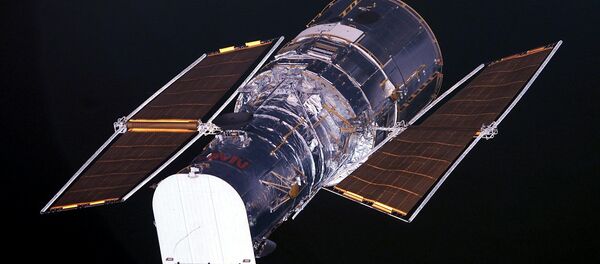Officials with NASA's Jet Propulsion Laboratory (JPL) came to their conclusion after pointing the US space agency's Spitzer Space Telescope toward ‘Oumuamua in November of 2017 after it was initially detected in Hawaii by the Pan-STARRS 1 telescope the month prior.
Upon realizing that ‘Oumuamua was "too faint" for the infrared space telescope to detect, even when the recently labeled comet made its closest approach to Earth, NASA scientists determined that the "non detection" placed the object's estimated size in question.
Previous observations, which focused on determining ‘Oumuamua's size by studying its brightness, suggested that the mysterious object was roughly 2,600 feet long and shaped like a cigar. However, by using Spitzer's infrared technology, NASA officials were ultimately able to conclude that ‘Oumuamua's "spherical diameter" ranges between 320 feet and 1,440 feet.
In a statement released by the California-based JPL, scientists explained that the "wide range of results stems from the assumptions about ‘Oumuamua's composition, which influences how visible (or faint) it would appear to Spitzer were it a particular size."
"'Oumuamua has been full of surprises from day one, so we were eager to see what Spitzer might show," David Trilling, lead author on the new study and a professor of astronomy at Northern Arizona University, said in a statement.
"The fact that 'Oumuamua was too small for Spitzer to detect is actually a very valuable result."
As Ars Technica reports, the latest study is consistent with findings published earlier this year, which suggested that ‘Oumuamua was less than half a mile long and got a speed boost as it passed the sun due to outgassing, the release of either trapped or frozen gas from the object.
Aside from size matters, researchers also concluded that ‘Oumuamua may be up to 10 times more reflective than any other known comet, explaining that the interstellar object might have had its surfaced "refreshed" at some point during its travels.
"It may have had its surface refreshed through such ‘outgassing' when it made an extremely close approach to our Sun, a little more than five weeks before it was discovered," the statement explains.
"In addition to sweeping away dust and dirt, some of the released gas may have covered the surface of 'Oumuamua with a reflective coat of ice and snow — a phenomenon that's also been observed in comets in our solar system."
The latest ‘Oumuamua-related news comes days after a pair of astronomers from the Harvard Smithsonian Center for Astrophysics lit the science world on fire with their theory that ‘Oumuamua was sent out into space on a reconnaissance mission by an alien civilization.





